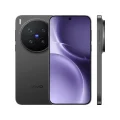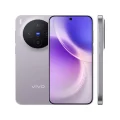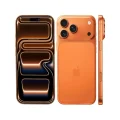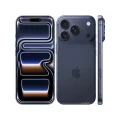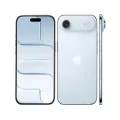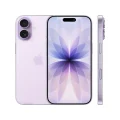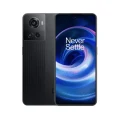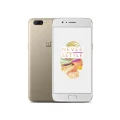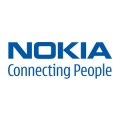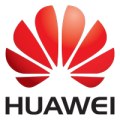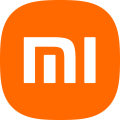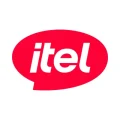- Home
- All Products
- Google Pixel
- Google Pixel 9 Pro XL
Google Pixel 9 Pro XL
-
Battery: 5060 mAh
-
RAM: 16GB
-
Storage: 128GB, 256GB, 512GB, 1TB
-
Display: LTPO OLED, 6.8 inches
-
Camera: Rear 50MP+ 48MP+ 48MP and Front 42MP
-
OS: Android 14, upgradable to Android 15, up to 7 major Android upgrades
Full Specifications
Price
| Unofficial | 100000 BDT 16GB/128GB, 118000 BDT 16GB/256GB, 170000 BDT 16GB/512GB Approx. |
General
| Model | Google Pixel 9 Pro XL |
| Announced | 2024, August 13 |
| Released | 2024, August 22 |
| Status | Available |
Design
| Dimensions | 162.8 x 76.6 x 8.5 mm (6.41 x 3.02 x 0.33 in) |
| Weight | 221 g (7.80 oz) |
| SIM SIM (Subscriber Identity Module) is a small card that contains mobile network subscriber's account information. This allows the phone using the card to attach to a mobile network. The SIM card is most commonly associated with GSM and UMTS mobile networks. Moving a SIM card from one phone to another allows a subscriber to switch mobile phones without having to contact their mobile network carrier. SIM cards can also be used by a phone to store limited amounts of data, such as phone numbers and text messages. |
Nano-SIM eSIM IP68 dust/water resistant (up to 1.5m for 30 min) |
| Colors | Porcelain, Rose Quartz, Hazel, Obsidian |
Display Specification
| Display Type Display Technology => A number of display technologies and types used in mobile phones => TFT (Thin Film Transistor), IPS (In-Place Switching), OLED (Organic Light Emitting Diode), AMOLED (Active-Matrix Organic Light-Emitting Diode), Super AMOLED (an even advanced version of AMOLED), Resistive Touchscreen (Resistive touchscreens contain two layer of conductive material with a very small gap between them which acts as a resistance), Capacitive Touchsceen (Capacitive touchscreen technology consists of a layer of glass coated with a transparent conductor) | LTPO OLED, 120Hz, HDR10+, 2000 nits (HBM), 3000 nits (peak) |
| Size | 6.8 inches, 109.7 cm2 |
| Resolution | 1344 x 2992 pixels, 20:9 ratio |
| Pixel Density Pixel Density (PPI) is refers to the concentration of pixels on a particular display, measured in pixels per inch (ppi). Pixel density is calculated by dividing the diagonal pixel resolution of a display by its diagonal size, higher pixel density better display quality. | 486 ppi density |
| Display Protection Display Protection => Gorilla Glass is a special alkali-aluminosilicate glass shield with exceptional damage resistance that helps protect mobile displays from scratches, drops, and bumps of everyday use, It is always better to go for a smartphone with Gorilla Glass for that added protection and peace of mind. | Corning Gorilla Glass Victus 2 Always-on display |
Platform
| Operating System OS => Every computer system run on a base software called Operating System (OS). Operating System controls all basic operations of the computer (such as smartphone, PDAs, tablet computers and other handheld devices). The Operating System allows the user to install and run third party applications (apps), apps are used to add new functionality to the device. | Android 14, upgradable to Android 15, up to 7 major Android upgrades |
| Chipset Chipset is a group of integrated circuits designed to perform one or a more dedicated functions, often with real time computing constraints, Popular smartphones are equipped with more advanced embedded chipsets that can do many different tasks depending on their programming. | Google Tensor G4 (4 nm) |
| CPU CPU (Central Processing Unit) mostly known as processors, CPU processes instructions in order to carry out certain functions that make your device operate properly. Processors are often described as the brain of computers, smartphones and tablets, Smartphones and tablets rely on processors to carry out their every task, Processors are an incredibly important factor in selecting any type of computing device, including your smartphone. | Octa-core (1x3.1 GHz Cortex-X4 & 3x2.6 GHz Cortex-A720 & 4x1.92 GHz Cortex-A520) |
| GPU GPU (Graphics Processing Unit) is a single-chip processor designed to rapidly manipulate and alter memory to accelerate the creation of images in a frame buffer intended for output to a display, This includes things such as lighting effects, object transformations, and 3D motion. | Mali-G715 MC7 |
Main Camera
| Camera Setup | Triple |
| Resolution |
50 MP, f/1.7, 25mm (wide), 1/1.31", 1.2µm, dual pixel PDAF, OIS 48 MP, f/2.8, 113mm (periscope telephoto), 1/2.55", dual pixel PDAF, OIS, 5x optical zoom 48 MP, f/1.7, 123˚ (ultrawide), 1/2.55", dual pixel PDAF, |
| Features | Multi-zone Laser AF, LED flash, Pixel Shift, Ultra-HDR, panorama, Best Take, Zoom Enhance |
| Video | 8K@30fps (via cloud-based upscaling), 4K@24/30/60fps, 1080p@24/30/60/120/240fps; gyro-EIS, OIS, 10-bit HDR |
Selfie Camera
| Camera Setup | Single |
| Resolution | 42 MP, f/2.2, 17mm (ultrawide), PDAF |
| Video | HDR, panorama |
| Features | 4K@30/60fps, 1080p@30/60fps |
Network & Connectivity
| Technology | GSM / HSPA / LTE / 5G |
| Speed | HSPA, LTE (CA), 5G |
| Wi-fi Wi-Fi is a popular wireless networking technology using radio waves to provide high-speed network connections that allows devices to communicate without cords or cables, Wi-Fi is increasingly becoming the preferred mode of internet connectivity all over the world. | Wi-Fi 802.11 a/b/g/n/ac/6e/7, tri-band |
| Bluetooth Bluetooth is a wireless communications technology for exchanging data between mobile phones, headsets, computers and other network devices over short distances without wires, Bluetooth technology was primarily designed to support simple wireless networking of personal consumer devices. | 5.3, A2DP, LE, aptX HD |
| NFC NFC (Near field communication) is a set of standards for smartphones and similar devices to establish peer-to-peer radio communications with each other by touching them together or bringing them into proximity, usually no more than a few inches. | Yes |
| Positioning | GPS (L1+L5), GLONASS, GALILEO, BDS, QZSS, NavIC |
| FM Radio | No |
| Infrared port | No |
| USB | USB Type-C 3.2 |
| 2G Network | GSM 850 / 900 / 1800 / 1900 |
| 3G Network | HSDPA 800 / 850 / 900 / 1700(AWS) / 1900 / 2100 |
| 4G Network |
1, 2, 3, 4, 5, 7, 8, 12, 13, 14, 17, 18, 19, 20, 25, 26, 28, 29, 30, 38, 40, 41, 48, 66, 71 - GGX8B 1, 2, 3, 4, 5, 7, 8, 12, 13, 14, 17, 18, 19, 20, 21, 25, 26, 28, 29, 30, 32, 38, 39, 40, 41, 42, 48, 66, 71, 75 - GZC4K |
| 5G Network |
1, 2, 3, 5, 7, 8, 12, 14, 20, 25, 26, 28, 29, 30, 38, 40, 41, 48, 66, 70, 71, 77, 78, 258, 260, 261 SA/NSA/Sub6/mmWave - GGX8B 1, 2, 3, 5, 7, 8, 12, 14, 20, 25, 26, 28, 30, 38, 40, 41, 66, 71, 75, 76, 77, 78, 79 SA/NSA/Sub6 - GZC4K |
Battery
| Battery Type Battery Type => Cell phones run on various kinds of batteries depending on the manufacturer, phone size or shape and features. There are basically four types of cell phone batteries => Lithium Polymer, Lithium Ion, Nickel Metal Hydride and Nickel Cadmium. | Li-Ion (Lithium Ion) |
| Capacity Battery Capacity is a measure (typically in Amp-hr) of the charge stored by the battery, and is determined by the mass of active material contained in the battery. The battery capacity represents the maximum amount of energy that can be extracted from the battery under certain conditions. | Li-Ion 5060 mAh |
| Removable | Yes |
| Charging |
37W wired, PD3.0, PPS, 70% in 30 min 23W wireless (w/ Pixel Stand) 12W wireless (w/ Qi compatible charger) Reverse wireless Bypass charging (w/ "Limit to 80%" option enabled) |
| Wireless Charging Wireless Charging (Inductive Charging) uses an electromagnetic field to transfer energy between two objects. This is usually done with a charging station. Energy is sent through an inductive coupling to an electrical device, which can then use that energy to charge batteries or run the device. | Yes |
Multimedia
| Loudspeaker | Yes, with stereo speakers |
| Audio Jack | No |
Storage
| Card Slot Memory Card Slot is a special slot for inserting a memory card. Memory cards allow you to expand the phone's built-in memory, A memory card (sometimes called a flash memory card or a storage card) is a small storage medium used to store data such as text, pictures, audio, and video, for use on small, portable or remote computing devices such as mobile phones, mp3 players, digital cameras. | No |
| Internal Storage Internal Storage is a data storage space (flash memory) mostly used in smartphones, tablets and other electronic devices where operating system, apps, music, photos, videos, files and other user data Is stored. |
128GB 16GB RAM, 256GB 16GB RAM, 512GB 16GB RAM, 1TB 16GB RAM UFS 3.1 |
Sensors
| Fingerprint | Yes, Under display, ultrasonic |
| Other Sensors | Accelerometer, gyro, proximity, compass, barometer, thermometer (skin temperature) Ultra Wideband (UWB) support Satellite SOS service Circle to Search |
PROS
- Display: The 6.8-inch OLED screen offers vibrant colors, smooth performance with 120Hz refresh rate, and exceptional brightness.
- Camera Setup: The triple-camera system delivers professional-quality photos with 48MP periscope telephoto lens for 5x optical zoom and a 50MP main camera.
- Battery Performance: The 5060mAh battery supports fast charging, including 37W wired charging and 23W wireless charging.
- Performance: Equipped with 16GB RAM and the Google Tensor G4 chipset, the phone offers seamless multitasking and gaming performance.
- Water Resistance: IP68 certification ensures durability against dust and water.
- Long Software Support: Regular Android updates for up to 7 years.
CONS
- No MicroSD Slot: The phone lacks expandable storage, so users are limited to the internal storage they select.
- No Headphone Jack: The 3.5mm headphone jack is missing, requiring wireless or USB-C headphones for audio.
- Price: The phone is premium-priced, which may not be ideal for users on a budget.
- Heavy: At 221g, it may feel bulky for those who prefer lightweight phones.
About the Google Pixel 9 Pro XL:
The Google Pixel 9 Pro XL, released in August 2024, is a flagship smartphone designed to deliver a premium experience. It boasts a 6.8-inch LTPO OLED display with a 120Hz refresh rate and impressive peak brightness levels reaching up to 3000 nits, making it one of the most vibrant screens available. Under the hood, the device is powered by the Google Tensor G4 chip paired with 16GB of RAM, offering excellent performance for multitasking, gaming, and AI-driven tasks.
The triple-camera setup is a standout, featuring a 50MP wide sensor, a 48MP periscope telephoto lens with 5x optical zoom, and a 48MP ultrawide camera, ensuring top-notch photography with great detail and versatility. On the front, the 42MP selfie camera supports 4K video recording, making it ideal for high-quality video calls and content creation.
The 5060mAh battery provides impressive longevity, supporting 37W wired charging and 23W wireless charging, ensuring you stay powered throughout the day.
The phone also offers IP68 water and dust resistance, making it durable against the elements. With Android 14 and up to 7 years of software updates, it’s a future-proof device. Whether you’re into photography, performance, or battery life, the Pixel 9 Pro XL stands as a highly capable and reliable option in the premium smartphone market.
Main Key Features:
- Display: 6.8-inch LTPO OLED, 120Hz refresh rate, HDR10+, and up to 3000 nits peak brightness for an immersive viewing experience.
- Chipset: Powered by Google Tensor G4 (4nm), which optimizes performance for AI, machine learning, and day-to-day tasks.
- Memory: Available in 128GB, 256GB, 512GB, and 1TB storage variants, with 16GB of RAM.
- Camera System: 50MP main camera, 48MP periscope telephoto with 5x optical zoom, and 48MP ultrawide lens for detailed photography.
- Selfie Camera: 42MP front camera capable of 4K video recording.
- Battery: 5060mAh with 37W wired charging and 23W wireless charging for fast, efficient power replenishment.
- Software: Ships with Android 14 and offers up to 7 major Android updates.
- 5G Support: Dual-mode 5G (Sub-6GHz and mmWave) for super-fast network speeds.
- Water Resistance: IP68-rated, providing resistance against dust and water (up to 1.5m for 30 minutes).
- Additional Features: Under-display fingerprint sensor, Ultra-Wideband (UWB) support, Satellite SOS, and Circle to Search for easy navigation.
Opinion:
The Google Pixel 9 Pro XL is a robust, premium flagship featuring standout features such as an impressive 6.8-inch OLED display, a versatile 50MP camera system, and 37W fast charging. The Google Tensor G4 chip ensures top-tier performance for both daily use and demanding tasks. However, it comes at a high price and lacks expandable storage, which might be a dealbreaker for some users. Overall, if you’re after a device that excels in photography, performance, and battery life, the Pixel 9 Pro XL is an excellent choice.
See Others, Model:
FAQs about Google Pixel 9 Pro XL:
Q: Does the Google Pixel 9 Pro XL have 5G?
A: Yes, it supports 5G (both Sub-6GHz and mmWave) for ultra-fast internet speeds.
Q: What is the battery life of the Pixel 9 Pro XL?
A: The phone has a 5060mAh battery, offering all-day usage with support for 37W wired charging and 23W wireless charging.
Q: Is the Google Pixel 9 Pro XL water-resistant?
A: Yes, it is IP68-rated, meaning it is resistant to water and dust (up to 1.5 meters for 30 minutes).
Q: Can I expand the storage on the Pixel 9 Pro XL?
A: No, the phone does not have a microSD card slot for expandable storage. Storage is fixed based on the variant you choose (128GB, 256GB, 512GB, or 1TB).
Q: How good is the camera on the Pixel 9 Pro XL?
A: The 50MP main camera, 48MP telephoto lens with 5x optical zoom, and 48MP ultrawide lens deliver exceptional photography and videography. It can record 8K video at 30fps and 4K video at multiple frame rates.
Q: What colors is the Google Pixel 9 Pro XL available in?
A: The Pixel 9 Pro XL comes in Porcelain, Rose Quartz, Hazel, and Obsidian colors.
Q: What software version does the Pixel 9 Pro XL run?
A: The device ships with Android 14 and will be eligible for up to 7 years of software updates from Google.
Give Your Review
Disclaimer Note
You can write your own disclaimer from APS Settings -> General -> Disclaimer Note.
